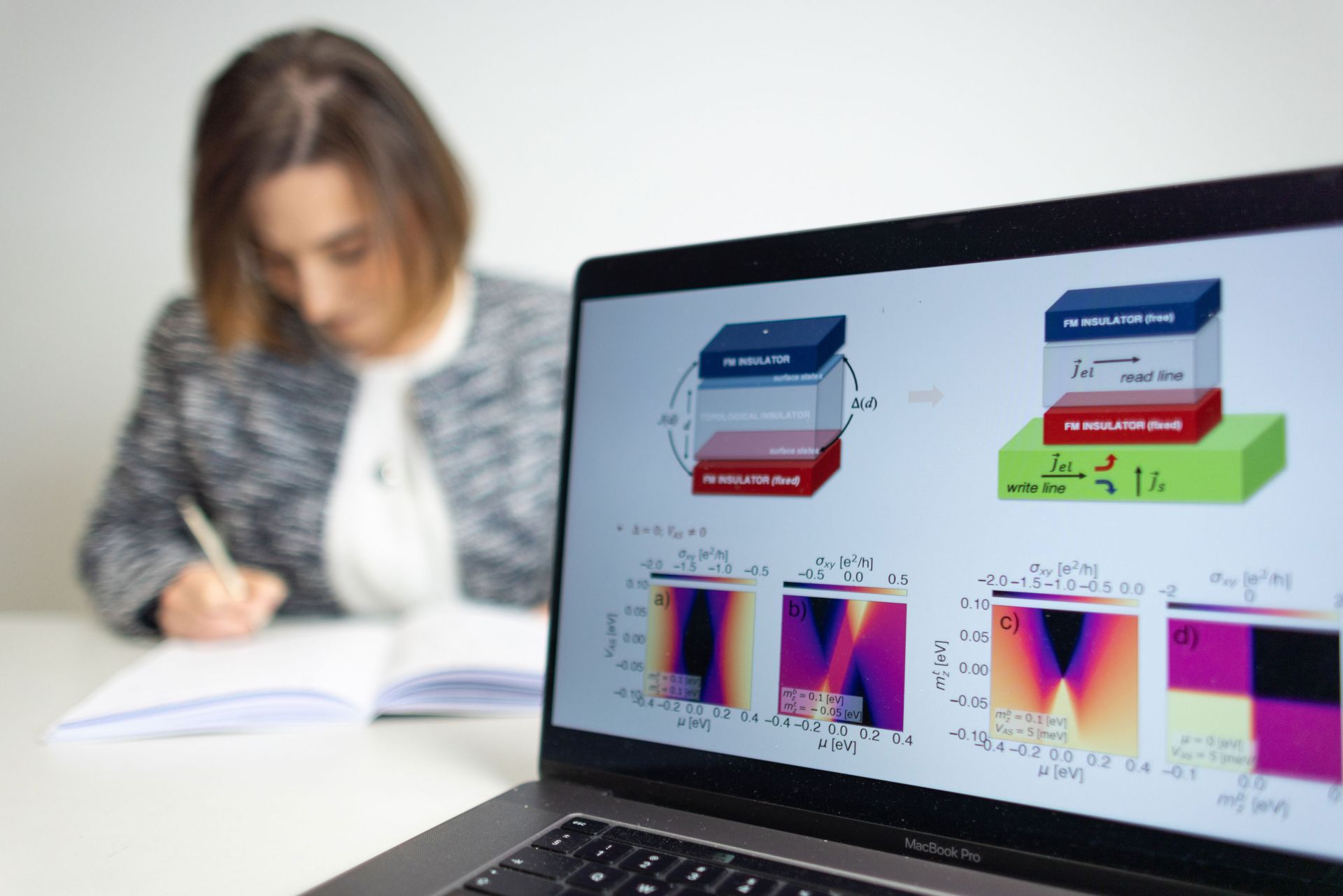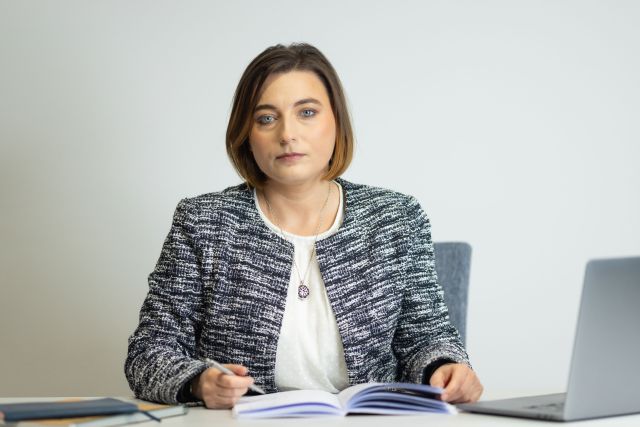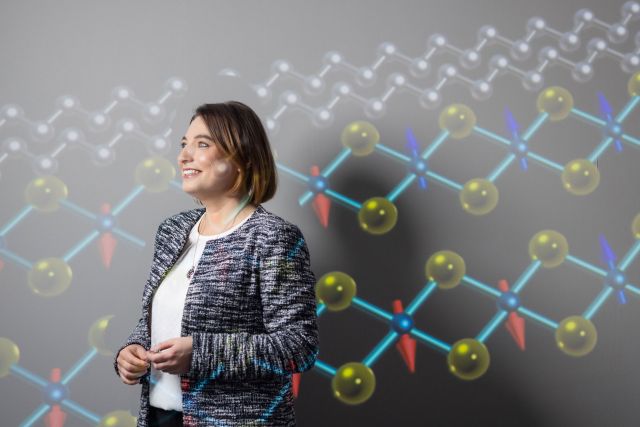Principal Investigator
:
Dr hab. Anna Dyrdał, prof. at the UAM
Adam Mickiewicz University in Poznań (UAM)
Panel: ST3
Funding scheme
: GRIEG
announced on
17 June 2019
The 2Dtronics project covers the fundamental aspects of solid-state physics and magnetism related to the interdisciplinary research in the field of spin electronics, in particular , nanospintronics and two-dimensional spintronics. In principle, the project is focused on the efficient control of the spin state and utilization of the electron spin on equal footing with its electrical charge.
Nowadays, the key objective of spin electronics is to find a highly efficient way of all-electrical control of electron spin state. Additionally, the control should involve very low energy consumption. Therefore, the one of the project objectives is to theoretically verify various possibilities to couple the spin degree of freedom with other degrees of freedom (sensitive to electric field), e.g. the valley or orbital ones. Another objective is to explore topological properties of matter, and their application possibilities for construction of electronic devices with extremely low energy dissipation.
The new paradigms for future electronics are indeed essential as it is expected that in 2025, the global power consumption of IT appliances will reach 4.6 trillion kWh, which corresponds to 15% of the global power generation. Furthermore, approximately 2.5 quintillion bytes of data are created every day. These two staggering numbers clearly show an urgent demand for novel solutions that could result in low-power, ultrafast, and high-density storage and processing devices.
 fot. Michał Łepecki
Therefore, the main emphasis in the project is put on novel materials, where quantum effects manifest in a wide range of energetic and length scales. The quantum materials, such as graphene, van-der-Waals heterostructures, topological insulators, or Weyl semimetals, exhibit their peculiar properties which follow from reduced dimensionality or collective excitation properties. In consequence, quantum materials serve as a platform for phenomena where the topological nature of quasiparticle states plays an essential role.
fot. Michał Łepecki
Therefore, the main emphasis in the project is put on novel materials, where quantum effects manifest in a wide range of energetic and length scales. The quantum materials, such as graphene, van-der-Waals heterostructures, topological insulators, or Weyl semimetals, exhibit their peculiar properties which follow from reduced dimensionality or collective excitation properties. In consequence, quantum materials serve as a platform for phenomena where the topological nature of quasiparticle states plays an essential role.
One of the project goals is to combine the spin and valley degrees of freedom with the symmetries and topological properties of the system to describe and propose phenomena that could allow us to work out new strategies for low-power-consumption electronics and logic devices.
Fascinating systems that host many exotic phenomena, such as unconventional superconductivity, non-linear Hall effects, or chiral magnon Bose-Einstein condensation are novel two-dimensional materials discovered over the past decade. Importantly, in quantum materials, the interactions related to spin, charge, lattice, and orbital degree of freedom are energetically comparable with electronic kinetic energy. Therefore, the properties of quantum materials are highly sensitive to external fields or forces that may relatively easily lead to quantum phase transitions. In this project, the quantum materials are studied theoretically to address burning questions, such as, : (i) how to modify the topological properties of 2D systems by external fields and forces, (ii) how to exploit emergent phenomena observed in 2D crystals and interfaces in the new generation of spintronic devices, (iii) how to account for the recently observed non-linear effects in quantum materials (non-linear system response, non-linear interactions), (iv) how to achieve the low-dissipation and long-range spin transport in novel low-dimensional magnetic systems, (v) how important are many-body effects in the low-dimensional quantum materials, etc..
Within the framework of the project, we new methods and protocols have been developed, to manipulate the order parameters typical to quantum materials, and to propose efficient ways to design electronic, magnetic, and topological properties of low-dimensional structures. We have focused on the efficient methods for modifying topological properties of 2D systems by external fields and forces.
Read more on project website.
Read also an interview with Anna Dyrdał and Marta Gmurek.
Project title: Spin and charge transport in low-dimensional novel quantum materials (2Dtronics)
Dr hab. Anna Dyrdał, prof. at the UAM
Theoretical physicist researching the theory of condensed matter in nanoscale. Particularly interested in the theory of spin-dependent electronic transport in semiconducting heterostructures, two-dimensional materials of graphene type, van-der-Waals heterostructures, and topological insulators. Specializes in theoretical description of the phenomena induced in electronic transport due to spin-orbital effects.
Her research experience was developed in many scientific institutions, including The Institut Català de Nanociència and Nanotecnologia ICN2 and Unité Mixte de Physique CNRS/Thales – Université Paris-Saclay.
Head of the Department of Mesoscopic Physics at the Faculty of Physics, Adam Mickiewicz University in Poznań and member of Polish Young Academy, Polish Academy of Sciences.


